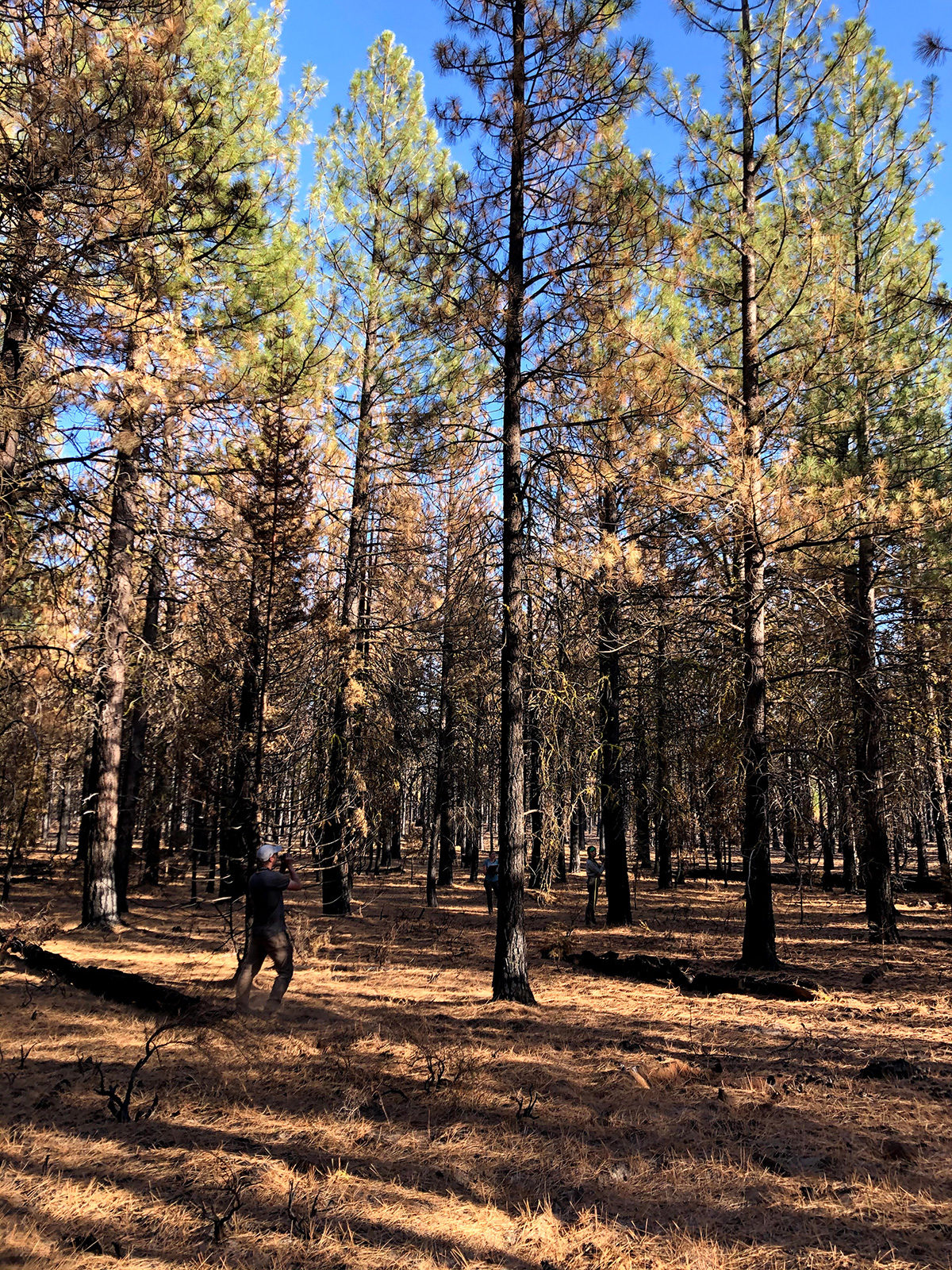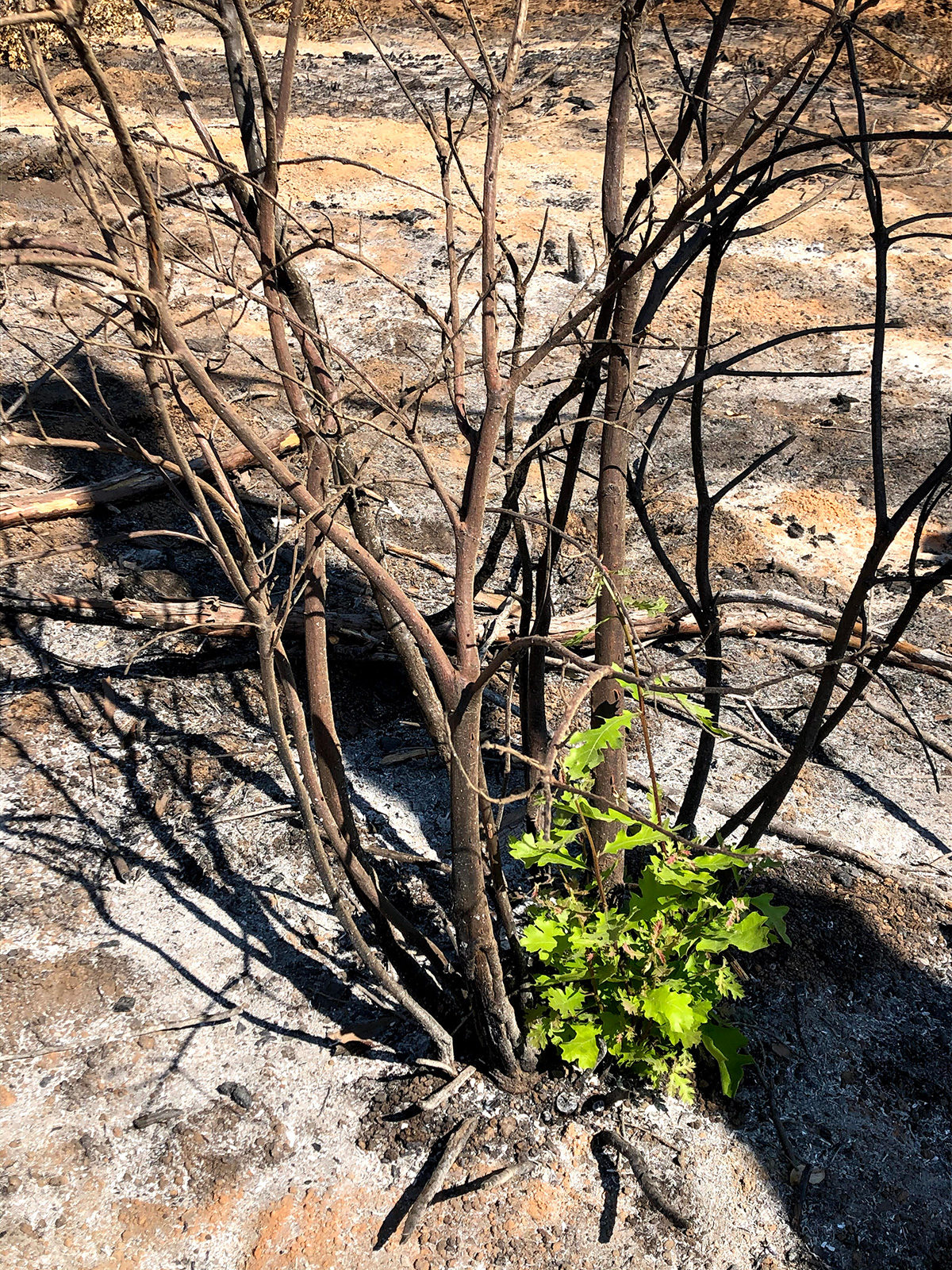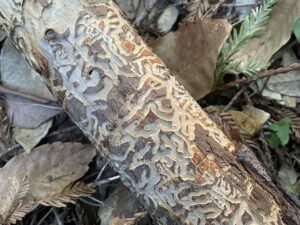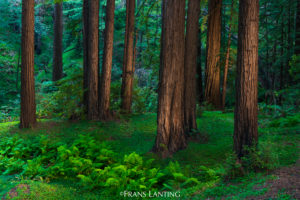One million acres. It seems an astounding number for a single fire. Even many fire scientists, who know full well that fire belongs in these forests, struggled to contain their surprise at how large the August Complex fire in the Mendocino National Forest has grown. Contrary to how the headlines usually portray it, however, size isn’t everything. Especially for wildfires. And for a state that must learn to live with fire, the first step is to distinguish between fires that are simply large and those that are irreversibly destructive.
Long ago, I was a wildland firefighter for the U.S. Forest Service. I saw a lot of fire. Stands of blackened toothpicks. Canyons that resembled “moonscapes” carpeted in fine white ash. But I also saw islands of green that were completely untouched by flames. Forests where fire had licked the ground clean but the overstory was untouched. One day, as I sat on the edge of a wilderness trying to figure out why we were fighting a fire in the middle of nowhere, I decided to go back to school and learn more.
I learned how to map fires from images taken by satellites orbiting Earth and identify areas that burned at different fire intensities. In doing so, I discovered something amazing: the patches that didn’t burn at all or only lightly burned were much more extensive than I had imagined. We called these areas “fire refugia,” because they provide a refuge for the many animals looking to escape the flames and harbor the trees that provide seeds to reforest the land. In some places, fire refugia averaged nearly 25 percent of the so-called “area burned.”

The rest burns in patches, too. A patch of dead trees here, only black trunks remaining, that quickly harbors colonies of beetles and the black-backed woodpecker who consumes them. Patches of orange and green speckled trees there, where flames scorched some needles and left others alive, and where a lush carpet of tree seedlings, grasses, and flowers will grow next year. We describe this patchwork as “burn severity.”
For the southern half of the August Complex (approximately a half-million acres), 52 percent of the surveyed area burned at low severity, and 44 percent was moderate. Only 4 percent of the total burned at high severity. And yet, even this classification is too simple to portray the complexity of fire impacts. It doesn’t tell us what was improved and what was decimated.
What if we flipped the script on fire? What if we assumed that fire didn’t mostly destroy, but instead it mostly renewed? Replenished the soil? Rejuvenated the forest? What if we described fires by how much good ecological work they did, but also acknowledged where gaps in human mitigation and adaptation have had tragic outcomes?
Large fires are often equated with destruction in the media, which gives them descriptors like “megafire” and (the newest superlative) “gigafire.” This is both scientifically inaccurate (“giga” would actually be a billion-acre fire) and misrepresents impacts. A very small fire can be highly destructive; the 1933 Griffith Park Fire near Los Angeles was a mere 47 acres but killed 29 people. The 1991 Tunnel Fire in the hills above Berkeley covered only 1,520 acres; 25 people perished and over 3,200 homes were destroyed.

Similarly, very large fires have burned for millennia in the boreal latitudes. The largest fire in modern United States history was the 2004 Taylor Highway Complex in Alaska, at 1.3 million acres. Never heard of it? That’s because lightning fires in most of Alaska are allowed to burn naturally, with limited fire suppression that focuses on protecting wilderness cabins and critical cultural sites. Such fires have begun to make the news in recent years because as they burn for longer and more frequently and at higher latitudes, they provide robust evidence of human-caused global warming.
Fires become large for many reasons. Look at a map of California that includes major roads. Ribbons of highway crisscross the state nearly everywhere. But west of Redding, in the North Coast Range, sits one of the largest chunks of land without a major crossing. The Mendocino National Forest occupies the center of this rural place, capped by the Yolla Bolly-Middle Eel Wilderness on the north end, and crowned by the Snow Cap Wilderness near the center. It is a land of amazing diversity and beauty that arises from the fantastical geological jumble that is the coast ranges of California. However, it is also some of the toughest terrain imaginable to fight fires in.
The region was so unforgiving and unappealing to mid-19th century white settlers that the US government established the Round Valley Indian Reservation there. Numerous tribes were forcibly removed from their homelands in more “desirable” parts of California to Round Valley. Then the United States tried to forcibly end the cultural burning practices that the Yuki people had practiced for generations on these landscapes. A fire deficit began to build.
The August Complex started as 37 different fires ignited by a dry lightning storm in the titular month, the same lightning event that started major fires in and around the Bay Area. Given the proximity to major urban areas, the LNU, SCU, and CZU Complex fires took precedence for firefighting resources, which were more limited this year due to the pandemic and the state’s reliance on incarcerated firefighters. In any other year, perhaps the U.S. Forest Service and CALFIRE would have gained the upper hand on the August Complex fires. But not in 2020. Too hot and too dry, thanks to climate change. Too many fires. The August Complex grew.
Tragedy struck; a firefighter was killed in a vehicle accident. Nearly a thousand structures have been razed. The fire has also inundated millions of people across western North America with choking smoke, likely substantially harming the lungs of thousands. To date, nearly $200 million has been spent on fire suppression of this fire alone.

But the August Complex has also left vast stands of green trees. It has cleared brush and grass and saplings from the forest understory, doing the work that tribes and lightning fires should have been allowed to do for the last century. The trees that survive will have more water available to them and will be better prepared to survive the inevitable next drought. Fire-adapted oaks, redwoods, and manzanita will re-sprout. Fire-tolerant pines will seed vast nurseries of tiny trees. Here’s another perspective on the cost: fire has been restored to over a million acres of fire-adapted forest, for the bargain price of only $200 per acre.
Soon winter will come, and the August Complex will be a memory for most Californians. It will likely retain its superlative banner for a few years, at least. Next year should bring a bounty to the burned area: morel mushrooms, a variety of berries and acorns, colorful wildflowers, and perhaps a surge of Columbian black-tailed deer and Tule elk into the lush grass that grows after a fire in many areas. After all, thousands of acres of habitat have been renewed.
The native inhabitants of Round Valley will rebuild and again seek to use cultural fire as their ancestors did. I hope that instead of shrinking in fear at the thought of more flames in a place where a million-acre fire just happened, we instead welcome and support cultural burning to continue restoration. Fire returned to work its ancient magic on a million acres in the August Complex. Let’s never let it leave again.





